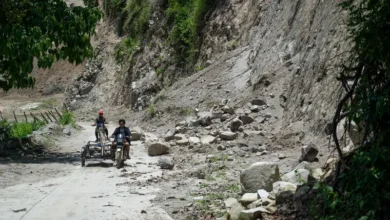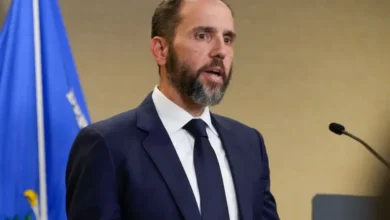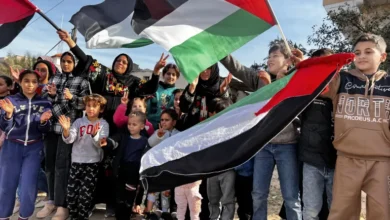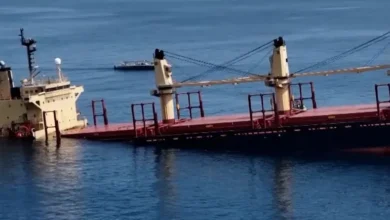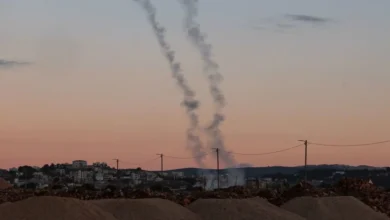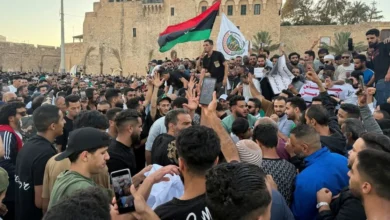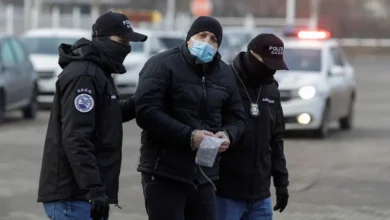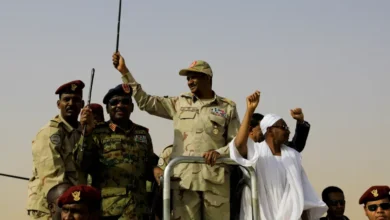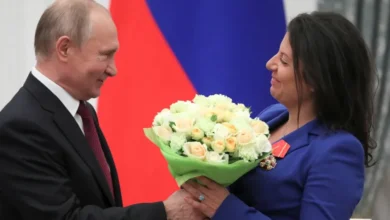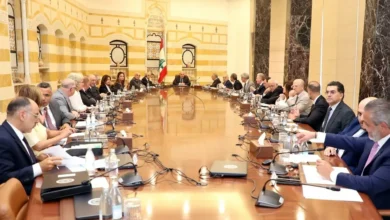Marxist-leaning Dissanayake wins Sri Lanka’s election: What’s next?

Marxist-leaning Anura Kumara Dissanayake has taken office as Sri Lanka’s president shortly after winning the country’s election.
Dissanayake, who was sworn in on Monday after winning Saturday’s polls, has inherited the top job in a nation battered by austerity measures imposed as a part of a bailout deal with the International Monetary Fund (IMF).
These austerity measures — hikes in income taxes and electricity prices — were introduced under outgoing President Ranil Wickremesinghe.
Wickremesinghe took over as leader after his predecessor Gotabaya Rajapaksa was ousted in 2022 following the country’s economic collapse and amid mass public protests that Dissanayake and his political party, the Janatha Vimukthi Peramuna (JVP), were part of.
In his inauguration speech, Dissanayake pledged “cleaner” politics. “People have called for a different political culture,” he said.
Who is the new president of Sri Lanka?
Dissanayake, 55, won the presidency in a second round of counting, after winning 42.3 percent support in the first round. His closest rival, Sajith Premadasa, got 32.8 percent votes in the first round. A second round of counting, in which preferential votes for the top two candidates are added, was needed because no candidate secured 50 percent votes in the first round.
Dissanayake’s party is part of the National People’s Power (NPP) alliance, which he leads. The JVP led antistate insurrections in the 1970s and 1980s.
Dissanayake was first elected to parliament in 2000. The JVP has never been close to power in the past, and Dissanayake won just 3 percent of the vote in 2019’s presidential election.
However, Dissanayake played an active role in the 2022 protests against Rajapaksa’s rule, known as the Aragalaya (Sinhalese for “struggle”). His popularity has risen since then.
His presidential campaign was built on the promise of fighting corruption.
Dissanayake has also been critical of Wickremesinghe’s $2.9bn bailout deal with the IMF.
Now in power, he faces questions over how he might navigate the island nation’s economic challenges at a time when it is deeply fractured.
What does Dissanayake need to implement his political plans?
Sri Lanka has a system of what is known as an executive presidency — much like the United States or France. In effect, that means that the president is both head of state and head of government.
While as president, Dissanayake will have the power to issue executive orders, he will need the support of parliament to pass laws.
And that’s where he faces his next political challenge. In the current parliament:
- The right-wing Sri Lanka Podujana Peramuna (SLPP), also known as the Sri Lanka People’s Front of the Rajapaksa family, holds a majority with 145 of the 225 seats.
- The Samagi Jana Balawegaya (SJB) of main opposition leader Premadasa holds 54 seats.
- The Illankai Tamil Arasu Kachchi (ITAK), the largest Tamil party, has 10 seats.
- Dissanayake’s NPP has only three seats.
- Other smaller parties have the remaining 13 seats.
So how will Dissanayake rule?
The new president had already made clear while campaigning for the election that he would dissolve the current parliament and call for new elections. Without new elections, the current parliament could run until August 20, 2025.
Dissanayake’s argument for the dissolution of parliament is simple: The existing makeup of parliament, elected in 2020, no longer represents the public will after the 2022 protests that showed that the SLPP of the Rajapaksa family in particular had lost broad support.
Sri Lanka’s constitution requires snap elections to be held within three months of the dissolution of parliament.
What could Sri Lanka’s next parliament look like?
Opinion polls conducted as recently as August indicated a close race if the parliamentary elections were held then. The SJB and NPP were shoulder-to-shoulder with 29 percent and 28 percent, respectively, according to a poll conducted last month by the Institute for Health Policy. The SLPP was at 19 percent.
If parliamentary elections throw up such a result, Sri Lanka could have what is known as a cohabitation government, in which the president and prime minister are from two different political parties.
Given the economic precarity in Sri Lanka, a cohabitation government “does not bode well as you need more consensus and ideological coherence for policy consistency”, Gamage said.
She added that a parliament consisting of a majority of opposition members could pose a challenge for Dissanayake.
“Especially because the NPP campaign was driven on a very ‘us-vs-them’ narrative. This makes it very hard for them to now say, ‘Let’s work together.’”
What does Dissanayake’s presidency mean for Sri Lankan Tamils?
Even though he won the election, Dissanayake did not get the votes of many Tamils, who make up 12 percent of the population of 22 million and are the country’s largest ethnic minority.
All leading candidates in the race were Sinhalese.
Opposition leader Premadasa won 40 percent of the cumulative vote across the country’s Tamil-majority areas. He has tried to appeal to Tamil voters even though his father, former President Ranasinghe Premadasa, was assassinated by a Tamil separatist group, the Liberation Tigers of Tamil Eelam, in 1993. The ITAK backed Premadasa in the election.
Dissanayake, on the other hand, said he does not regret supporting the Rajapaksa government’s war against the Tamil Tigers. The civil war was quashed in 2009 under President Mahinda Rajapaksa after 26 years.
Still, Dissanayake made a call for unity in his inauguration speech.
“There are things I know and things I don’t know, but I will seek the best advice and do my best. For that, I need the support of everyone,” he said.
Tamil leaders have expressed optimism that Dissanayake will steer clear of sectarian politics.
